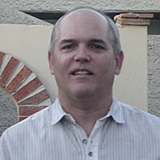
|  |  |  News Around the Republic of Mexico News Around the Republic of Mexico  
Revolution Centennial Celebrated in Mexico City
 Allan Wall - PVNN Allan Wall - PVNN
November 21, 2010

On November 20th, 2010, Mexico celebrated the Centennial of the Mexican Revolution, a struggle which began on November 20th, 1910.

Every nation needs shared values and a sense of shared history, what Abraham Lincoln referred to as “mystic chords of memory”. National celebrations and their traditions often play a role in this.

The Revolution is an important part of Mexican identity. It established the foundation of today’s Mexican political world and produced the current Mexican constitution. All political parties claim to follow the ideals of the Mexican Revolution, though they interpret and practice them differently.

This year is special. It’s the Centennial of the Revolution and the Bicentennial of Mexican Independence. The entire calendar year of 2010 is considered the Bicentennial/Centennial year. There are over 700 activities being held to commemorate this dual anniversary.

On November 20th, 2010, Mexico City, being the center of the Mexican political world, was the scene of several commemorations of the Revolution. The federal government, headed by Mexican president Calderon, had its celebrations, while Mexico City’s government, headed by Mayor Marcelo Ebrard, had its celebrations.

President Calderon unveiled an equestrian statue of Francisco I. Madero, the first leader of the Mexican Revolution.

In his discourse, Calderon called on Mexicans to "fight for liberty and the rights of Mexicans of today and of tomorrow... . And now it’s our turn…to uphold the best of those ideals and to promote the profound changes that our fatherland requires… this historic date of the Centennial is... calling for change for Mexico.

This is the moment to refresh with pride our past, but overall, to consider with audacity and ambition, and also with pride and joy, our future. This is the work of the generation of the Bicentennial and the Centennial – to continue forging our great nation, in the ideals and values that unite us in diversity... May many generations of Mexicans continue evoking the revolutionaries, but, overall, continue enjoying the rights, liberties and the democracy conquered by all of them."

The Mexican federal government sponsored a military parade which made its way through downtown streets and passed through the Zocalo, Mexico City’s main plaza. From a balcony of the federal palace, overlooking the plaza, the parade was reviewed by President Calderon, who was accompanied by Jorge Carlos Ramirez, head of the Chamber of Deputies, Manlio Fabio Beltrones , head of the Senate, and Chief Justice Guillermo Ortiz (not to be confused with the Guillermo Ortiz who was formerly chief of Mexico’s central bank). Therefore, the three branches of the federal government – executive, legislative and judicial- were represented.

The ceremony in the Zocalo was kicked off with a massive gymnastics display in which 2100 military personnel spelled out appropriate words and aircraft flew overhead.

As for the parade itself, 8,806 military personnel, 183 civilians, and 935 horses participated . There were historical floats and costumed horsemen. On display in the Zocalo was a locomotive, commemorating the historical importance of railroads in the revolution.

The Mexico City government organized its own parade, which marched to the refurbished Monumento a la Revolución, where the Mexico City Government held its ceremony. This ceremony had more of a political flavor. Speakers included leftist elder Cuauhtemoc Cardenas and Mayor Ebrard himself.

Cardenas slammed the past five Mexican administrations and the Bicentennial/Centennial celebrations carried out under the Calderon administration. (It should be pointed out that in 2006, then-President Fox had asked Cardenas to be the coordinator of the Bicentennial/Centennial committee. Cardenas served in that capacity for five months before resigning. So he could have had a bigger influence on the federal celebrations had he remained in that position.)

Mayor Ebrard told the assembled that only leftists can provide the vital impulse that Mexico needs, and exhorted listeners to look to the future: “Let us make a commitment in this great plaza, the plaza of the Republic, that we will meet soon to celebrate the triumph of the Left...”

That may well come to pass in two years, as Ebrard himself may be a candidate for president in the upcoming 2012 election. And he could win.

Ideally, politics would have been kept out of the Bicentennial/Centennial. That of course wasn’t possible.

Still, it’s been a hundred years since the Revolution began. It’s a subject worthy of study, consideration and reflection, as is the rest of Mexican history.
 Allan Wall is an American citizen who has been teaching English in Mexico since 1991, and writing articles about various aspects of Mexico and Mexican society for the past decade. Some of these articles are about Mexico's political scene, history and culture, tourism, and Mexican emigration as viewed from south of the border, which you can read on his website at AllanWall.net. Allan Wall is an American citizen who has been teaching English in Mexico since 1991, and writing articles about various aspects of Mexico and Mexican society for the past decade. Some of these articles are about Mexico's political scene, history and culture, tourism, and Mexican emigration as viewed from south of the border, which you can read on his website at AllanWall.net.

Click HERE for more articles by Allan Wall.
|

 |
|  |



